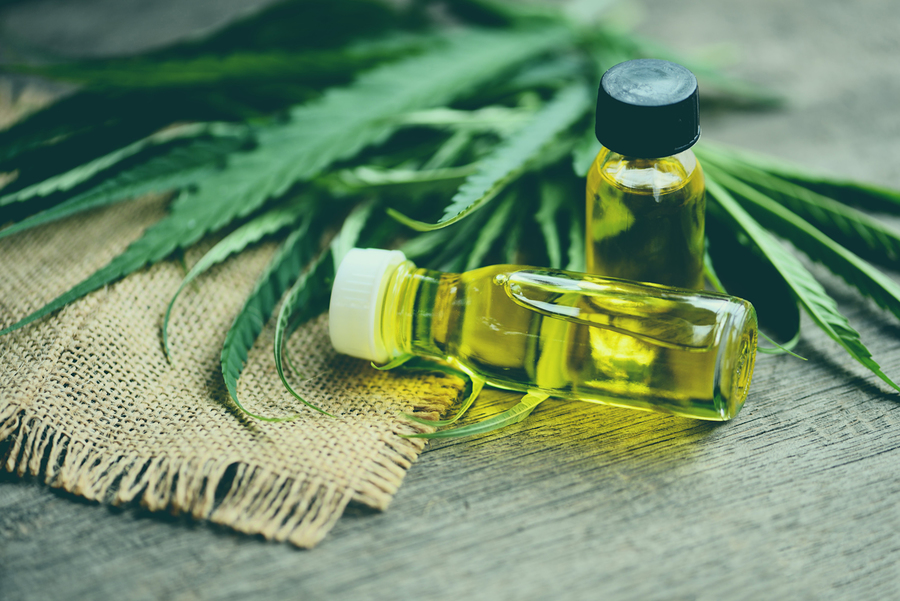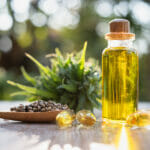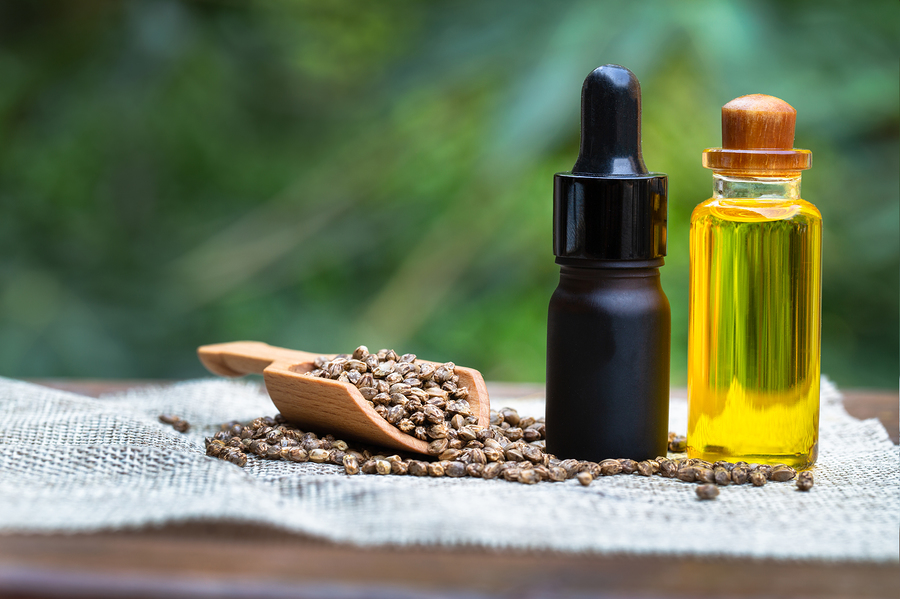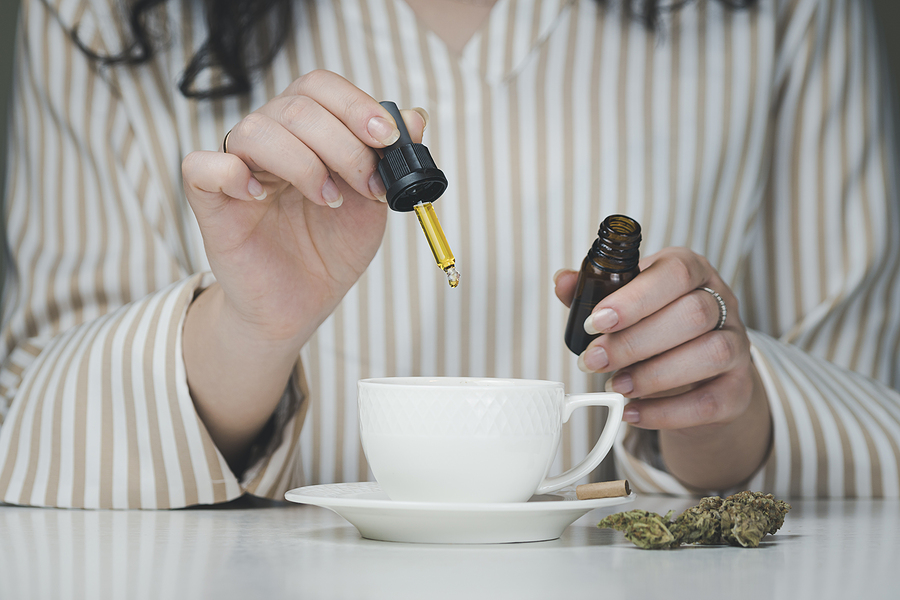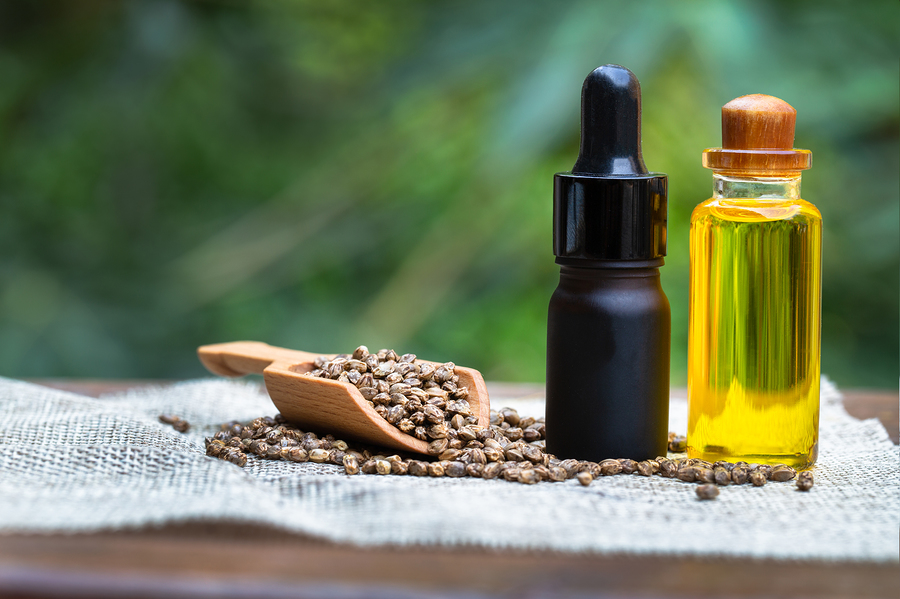Rooted in traditional herbal medicine, tinctures have a rich history of delivering potent herbal benefits.
As we delve into the world of tinctures, let’s explore their origins and evolution, especially the rising prominence of cannabis tinctures in contemporary wellness and medicinal spheres.
In this article, we will explore what tinctures are, their history, how they are made, and the benefits of using tinctures.
Whether you are new to tinctures or an experienced user, this guide will help you understand the basics and expand your knowledge of this fascinating herbal extract.
>>Check the best prices for CBD tinctures here
What Is Tincture?
Table of Contents
A tincture is a concentrated liquid herbal extract that preserves the active compounds found in plants. It is made by extracting the beneficial properties of herbs using a solvent, typically alcohol, and sometimes glycerin or vinegar.
Cannabis tinctures specifically utilize these extraction methods to harness cannabinoids’ therapeutic potential, offering precise dosing and diverse consumption possibilities.
Just like CBD gummies, tinctures are also known for their potency and effectiveness in delivering the therapeutic benefits of herbs [1].
Historical Background of Tinctures
The use of tinctures dates back to ancient times, with records of their use found in ancient Egyptian and Chinese civilizations. Tinctures were highly valued for their medicinal properties and were used to treat various ailments.
In Europe, tinctures gained popularity during the Renaissance and were widely used by herbalists and physicians. Today, tinctures continue to be used in traditional medicine practices and have also gained recognition in holistic and alternative health communities.
How Are Tinctures Made
Tinctures are made through a process called maceration. The herbs or plant material are soaked in alcohol or another solvent to extract the active compounds. The alcohol acts as a menstruum, extracting the medicinal properties of the herbs and preserving them in a concentrated form.
The maceration process can take several weeks or even months, allowing for the extraction of a wide range of compounds from the plant material. After the maceration period, the liquid is strained, and the herbal extract is obtained.
Making Cannabis Tinctures
Creating cannabis tinctures involves meticulous extraction techniques, selecting suitable weed strains, and undergoing decarboxylation to activate cannabinoids.
Whether opting for an alcohol-based or glycerin-based approach, the process requires proper measurements, infusion periods, and careful filtering for a potent end product.
>>Check the best prices for CBD tinctures here
How To Use Tinctures
Tinctures can be used in various ways depending on the desired effect and the herb being used. They can be taken orally by adding the recommended dosage to a small amount of water or juice.
Sublingual administration, where the tincture is placed under the tongue, is another common method. This allows for faster absorption into the bloodstream. Tinctures can also be added to topical products such as creams or lotions for external use.
It is important to follow the recommended dosage when using tinctures and consult a healthcare professional if needed.
Commonly Available Tinctures
Below is a list of six of the most popular tinctures, many of which are sold commercially:
- Cannabis Tincture: A potent extract of cannabinoids from cannabis seeds, offering versatile consumption for therapeutic benefits.
- Propolis Tincture: A resinous substance from bees known for its antibacterial and healing properties in herbal medicine.
- Echinacea Tincture: Derived from the Echinacea plant, it’s used to boost the immune system and alleviate cold symptoms.
- Benzoin Tincture: An aromatic resin extract with antiseptic qualities commonly used in skincare and wound healing.
- Turmeric Tincture: Extracted from turmeric root, it offers anti-inflammatory and antioxidant benefits for health and wellness.
- Elderberry Tincture: An immune-boosting extract from elderberry fruit known for its flu-fighting properties and antioxidants.
Benefits of Using Tinctures
Tinctures offer several advantages over other forms of herbal preparations. Firstly, tinctures are highly concentrated, making them more potent and effective than other methods of herbal consumption.
The concentrated nature of tinctures allows for a smaller dosage, making them convenient and easy to use. Additionally, tinctures have a long shelf life when stored properly, preserving the medicinal properties of the herbs for an extended period.
Cannabis Tinctures: Benefits and Uses
Incorporating cannabis tinctures extends beyond sublingual administration. From relieving pain to alleviating anxiety and aiding sleep, these versatile extracts offer therapeutic benefits.
Whether consumed sublingually, used topically, or infused in recipes, cannabis tinctures serve as a discreet, potent, and adaptable form of cannabis consumption.
Types of Tinctures
Tinctures can be made using different types of alcohol or solvents. The choice of solvent can affect the extraction process and the resulting properties of the tincture.
- Alcohol-based tinctures are the most common and widely used. They are effective in extracting a wide range of compounds from plants.
- Glycerin-based tinctures are an alternative for those who want to avoid alcohol.
- Vinegar-based tinctures are less common but can be used when alcohol is not suitable.
Each type of tincture has its own unique properties and can be chosen based on individual preferences and needs.
Popular Herbs Used in Tinctures
A wide variety of herbs can be used to make tinctures, each with its own unique set of medicinal properties. Some popular herbs used in tinctures include:
- Echinacea: Known for its immune-boosting properties, Echinacea tincture is often used to prevent and treat colds and flu.
- Valerian: Valerian tincture is commonly used as a natural remedy for anxiety and insomnia. It has calming and sedative effects.
- St. John’s Wort: This tincture is known for its antidepressant and mood-stabilizing properties. It is often used to alleviate symptoms of depression.
- Ginger: Ginger tincture is well-known for its digestive benefits. It can help relieve nausea, indigestion, and bloating.
These are just a few examples, and countless other herbs can be used to make tinctures. It is important to research and understand the specific properties and uses of each herb before using them in tincture form.
>>Check the best prices for CBD tinctures here
Tincture Dosage and Safety Considerations
The dosage of tinctures can vary depending on the herb and the desired effect. It is important to follow the recommended dosage provided by the best seed banks or a qualified herbalist. Start with a low dosage and gradually increase if needed.
Always consult with a healthcare professional before using tinctures, especially if you have any underlying health conditions or are taking medications.
Where To Buy Tinctures
Tinctures can be purchased from various sources, including health food stores, herbal shops, and online retailers. When buying tinctures, it is important to choose high-quality products from reputable manufacturers.
Making Your Own Tinctures at Home
If you prefer a more hands-on approach, you can also make your own tinctures at home. This allows you to have full control over the ingredients and the quality of the tincture. To make a tincture at home, you will need high-quality herbs, a suitable solvent, and glass jars for maceration.
There are various recipes and methods available online that can guide you through the process. However, it is important to note that just like learning how to grow cannabis, making tinctures at home requires knowledge and caution, as improper preparation can result in ineffective or potentially harmful products.
What Is a Tincture: Takeaway
Tinctures are a valuable tool in the world of herbal medicine. Understanding the basics of tinctures, including their history, how they are made, and their uses, can empower you to incorporate them into your wellness routine.
Whether you choose to purchase tinctures or make them at home, always prioritize quality and safety. Remember to consult with a healthcare professional before introducing tinctures into your healthcare regimen.
By demystifying tinctures, you can unlock the potential of this herbal extract and experience the benefits it has to offer.
>>Check the best prices for CBD tinctures here
References:
- Tran, T., & Kavuluru, R. (2020). Social media surveillance for perceived therapeutic effects of cannabidiol (CBD) products. The International journal on drug policy, 77, 102688. https://doi.org/10.1016/j.drugpo.2020.102688
Site Disclaimer
Marijuana is a Controlled Substance under the Controlled Substance Act (21 U.S.C. 802) (“CSA”) and the cultivation, distribution, and possession of marijuana is a crime under federal law. Keep all marijuana and marijuana products out of reach of children and animals. Intoxicating effects of marijuana and marijuana products may be delayed. Use of marijuana while pregnant or breastfeeding may be harmful. Consumption of marijuana and marijuana products impairs your ability to drive and operate machinery, please use extreme caution.
Related Categories: Marijuana, Reviews



